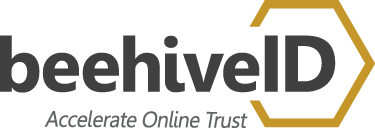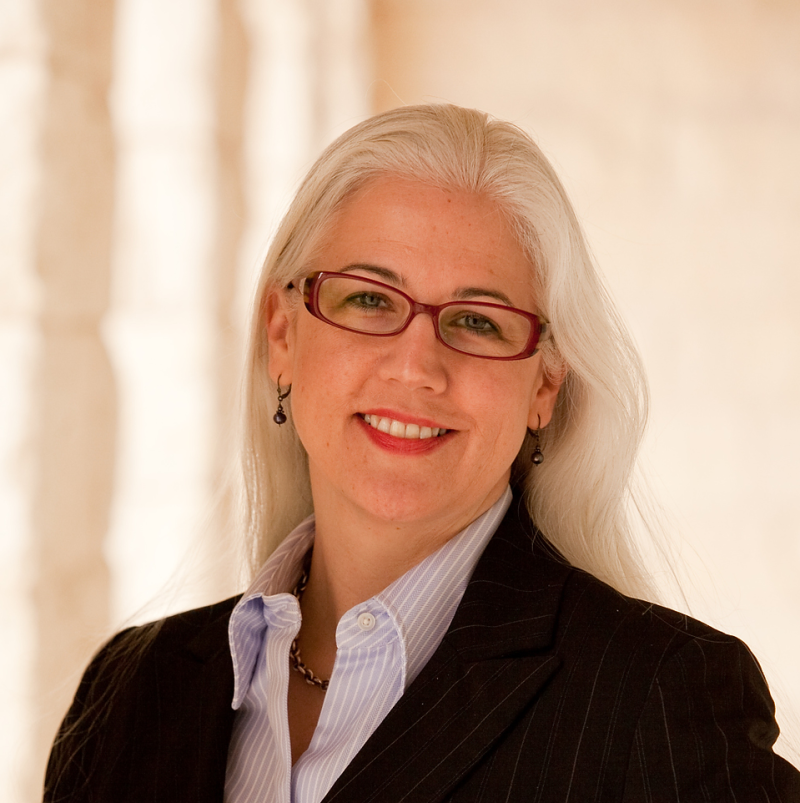Featured BizSpark Startup - BeehiveID
BeehiveID startup is helping the fight against cybercrime by being the “Carfax for People.”
Mary Haskett, Founder of BeehiveID, tells us how she got the idea for a new way to authenticate people online.
What is your company's mission?
We live in a world where bad actors mask their identities. BeehiveID is a global social verification company that enables trust by unmasking these bad actors before they have a chance to commit online fraud. By using the Social Authentication Technology™ (SAT), which uses social network data and identifies fake and real users in real-time, BeehiveID helps companies increase trust while lowering friction in an online transaction.
Microsoft technologies that you are using in conjunction with the development of your application:
At BeehiveID, we use Azure – both worker roles and VMs, C#, and MVC4.
Do you build for scale first, or for revenue? How are those things related in your mind?
OK, so the truth is that we built for scale, because our team has a background working with very large scale data sets. It’s just how we think at BeehiveID. Our goal is to eventually support very large scale data sets so we just couldn’t imagine doing it differently. But one of the things we learned in the Microsoft Accelerator is that we actually should have built for revenue. There is no point in investing in all of the infrastructure to support 1M users until you know you can actually get 10, then 100 and maybe 1,000 and 10,000. A company is far more likely to fail because not enough people want what they have, rather than fail because they are so in demand that they can’t scale fast enough. That doesn’t mean you don’t need to do the work to make sure that you can scale and have a basic roadmap for how you are going to do it. Focusing on product is so seductive; it feels like you are accomplishing SO MUCH; but we’ve learned that the real challenge is to develop your customers.
Do you make reasonable predictions about how you are going to achieve revenue and then test them out, or do you start with a business model and deploy it, to see if it brings in revenue?
We made predictions and tested them to the extent that we could, but we had some technical risk we had to work out. By the time we sorted through all that, we had something that was very close to deployable.
What questions do you think a startup non-technical founder needs to answer when considering a cloud architecture for his or her startup, and I am thinking specifically here during the business model generation period?
You have to take a close look at the connection between the technology and your financial model/business plan. We started out having no idea how much it would cost to generate one BeehiveID score. We knew it was going to be computationally very expensive and knew that it was embarrassingly parallel, so we just trusted that we would be able to find a way to do it at a price point the market could support. With our first prototype, we calculated it and discovered that it was quite a bit more expensive than we expected. Our entire business model was going to have to change – suddenly it was a high-end technology sale with long sales cycles and that wasn’t what we had envisioned. In the end, we threw away a lot of code and rewrote almost half of the code base to get to a place where we could price BeehiveID so that it was accessible to the market we wanted to reach.
What questions do you and your technical co-founder / engineering team feel are the most important to solve about the business aspects of your company?
Our team is tech heavy, so we focused hard to our customer acquisition strategy because we assumed (correctly) that this would be the hardest part and have the steepest learning curve.
Where do you include technical members of your team during the building of your business plan?
I have learned through the school of hard knocks that success for a startup is all about the customers and revenue and that EVERYONE on the team needs to understand at a visceral level business basics such as “How do we make money?” and “Why do our customers use our product?”
How much of what you are building is based on leaving a legacy and how much of it is based on technical challenges, or the ability to make something just for fun? In other words, where do you fall on the seriousness scale? For fun, for profit, for life?
The decision to apply to the Microsoft Azure Accelerator was not made lightly; the founding team is older and we both have families and kids in college. The concepts behind BeehiveID are ones we had been talking about for years and at some point you just realize that if you don’t go for it now, you never will. Building something that will help people and see it deployed in the marketplace IS fun and I hope we can make money at it as well.
When did you decide that you were “startup material”?
I joke that I had a “real job” briefly after graduate school but it didn’t take. I started a training company that developed interactive training for Fortune 500 companies. We had a team of 14 people but I didn’t think of myself as an entrepreneur but as someone who was really passionate about building really great training programs. I was starting my third company before I really thought of myself as an entrepreneur.
What impact or legacy do you hope to make in the market and in the business world?
We want to be the trusted source for identity and reputation on the Internet – the “Carfax for People.”
What are some of the challenges you face as a founder or developer at a startup, when it comes to dealing with family life, or socially? Does working on a startup change the way you associate and interact in these areas?
My family is supportive and that’s essential. Before I started BeehiveID, I sat down with my husband and kids and talked about what I wanted to do, what it was going to mean for everyone and made sure that everyone was on board. They are all amazing and supportive.
What characteristics do you possess that make you an entrepreneur? What makes your startup a startup?
I think the thing that makes me an entrepreneur is that I’m comfortable being uncomfortable. It’s a Navy SEAL saying, but I think it’s entirely appropriate for entrepreneurs. I learned how to skydive when I was a freshman in college. Unlike the stereotype, I was timid, afraid and made my instructor repeat everything twice. I was probably a really annoying student. But at the end of the day, I stuck with it and jumped out of the airplane. It’s not that I wasn’t scared – I was so scared I could barely move. The important thing is that I was scared spit less and I did it anyway. Never in a million years did I think I could be a skydiver but after that day, I understood that I was capable of more than I realized. As an entrepreneur, you are constantly having to learn new things, change how you do things and you just generally can never get comfortable. You have to embrace that.
Can you describe the relationship that you have had with Microsoft in building your startup?
We had the idea behind BeehiveID years ago, but it felt too big to even attempt. When we heard about the Microsoft Accelerator program, it really seemed like the universe was telling us to go for it – the program was structured for the kind of help we needed and the timing was perfect. If not now, then when? In the first three weeks, we made a major pivot and Microsoft helped us every step of the way. We were able to work directly with Azure engineers – they reviewed our architecture and helped ensure we were using the resources as efficiently as possible. The contacts we made turned into additional contacts and enabled us to find the best people to interview for customer development. Microsoft pricing people reviewed our proposed pricing structure and pointed out a major flaw (the way we had it structured was just not going to work). The list goes on. The people we worked with weren’t just showing up because they were told to – they were really interested to see how entrepreneurs were using the Microsoft tools to build new technology and they went above and beyond any expectations we had in their willingness to help.
Tell us about your Azure based solution.
Put simply, when a new user enrolls in BeehiveID, we have to quickly go gather thousands of points of data from social networks, public and private data sources, perform biometric, text, and other kinds of analysis on the record.
We primarily use Azure queues and worker roles. The use of Azure queues allows us to always be responsive, because all we have do on new user sign-up is to insert a new job into the queue. We have a variable number of worker roles that spin up automatically based upon the backlog in the queue. The scaling is pretty hands-off and works well. A worker role takes a job from the queue and spawns new jobs which are handled by other workers. We kept it simple by having one type of worker that can process any type of job.
Calls to social networks are always subject to fail at any time for random reasons. The use of Azure queues allows us to robustly handle this. Any job that can’t complete is automatically processed again once it re-enters the queue.
We also use VMs to run a no-sql database (MongoDB). We run a replication set, so maintenance is very easy without any downtime.
How did you get excited about Azure?
The use of worker roles (PAAS) was new to us, but we rapidly grew to love it. Instead of having to create a service and set up a server to run it, we can just create the service itself and not worry about the machine at all. That makes scaling very easy. Azure’s model for queues and worker roles almost forces you to make scalable applications. The example projects were very helpful as well.
What were the Azure features that prompted you to decide to build on Azure?
Primarily the ability to run both PAAS and IAAS on the same environment. Our team has been programming in C# for over a decade, and it was extremely helpful to be able to push services directly to the cloud. However, we also run some Linux services as well. Without Azure’s support for VMs, we would have had to use two different cloud providers.
What advice do you have for companies that are thinking about building in the cloud?
If you are building the kind of app that needs to scale, you have to think about that from day 1. It isn’t terribly hard to do this, but if you do it wrong it will be a lot of re-work to add scalability later. And when you really need to scale, you won’t have time to do it. You want to be able to just drag that Azure “number of instances” slider to the right and not worry about it.

